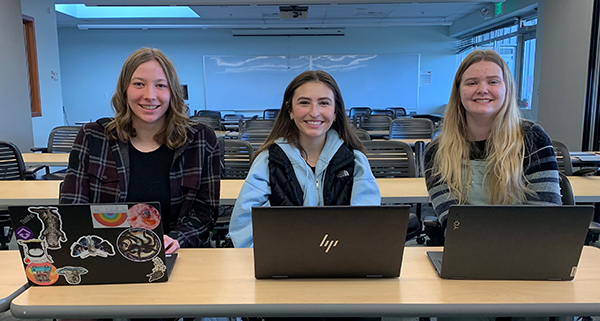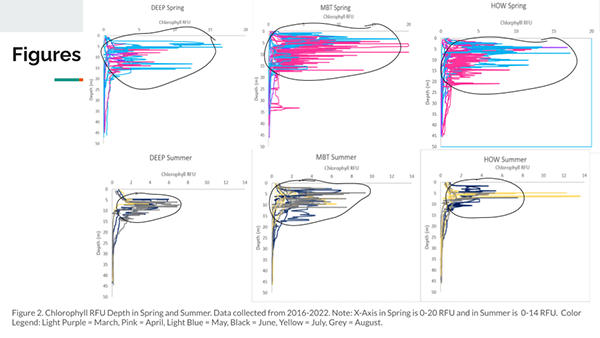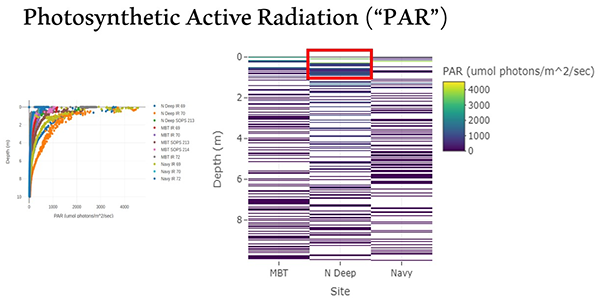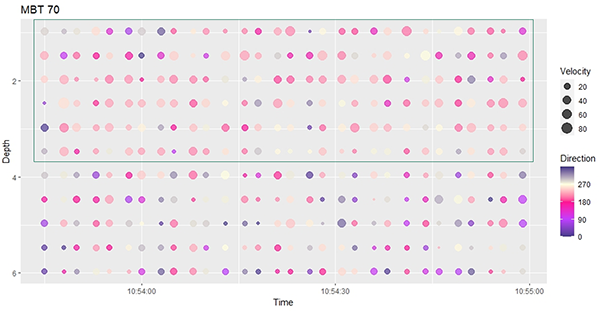ORCA students share their ocean research
Release Date: March 13, 2023
Written By: Josh Searle, English faculty member
Three Everett Community College sophomores, all students at the Ocean Research College Academy (ORCA), continued the ORCA tradition of sharing students’ groundbreaking research in Possession Sound at an online meeting Feb. 15 with researchers associated with Washington State’s Puget Sound Ecosystem Monitoring Program (PSEMP).
ORCA is a two-year, full-time Running Start program for juniors and seniors in high school. The student experience is designed around undergraduate research opportunities, and their research is made possible through access to ORCA’s own 34-foot research vessel, Phocoena.

EvCC ORCA sophomores, from left, Kyler Brumfield, Natalie Brachvogel, and Sydney Schneider are all smiles after presenting to scientists gathered for a meeting of the Puget Sound Ecosystem Monitoring Program on Wednesday, Feb. 15. (Photo by Josh Searle)
Sydney Schneider, one of the student presenters, described how intimidating it was to share their emerging research with researchers whose names are on the papers they are citing. After the experience, however, Schneider said, “They were so nice. [The experience] humanized them … it makes the goal of being a researcher seem more possible.”
Sydney is analyzing seasonal nutrient trends relative to chlorophyll, temperature, and salinity in Possession Sound over a six year period.

Six chlorophyll profiles, using relative fluorescence units (RFU), from samples taken throughout Possession Sound, 2016-2022, by ORCA students. Sydney Schneider is intrigued by shifts each season as well as the surprising depth at which chlorophyll is being measured in the Sound. (Graphic by Sydney Schneider)
“It was a wonderful opportunity,” said presenter Natalie Brachvogel, who is analyzing photosynthetically active radiation (PAR) – a measure of wavelengths of light available for photosynthesis – at depth in Possession Sound.
One of her mentors from the King County Environmental Lab described PAR data as inherently “messy,” and Brachvogel is trying to determine relationships among PAR values and a range of chemical and physical parameters.

A dot plot and heat map of photosynthetic active radiation (PAR) values at three distinct sites in Possession Sound. Natalie Brachvogel draws viewers’ attention to higher PAR values with depth at one site in particular. (Graphic by Natalie Brachvogel)
“It was cool to know these scientists I’ve looked up to were interested in my research,” Kyler Brumfield said. “They provided so many other questions and ideas related to my research.”
Brumfield is utilizing data gathered from an acoustic doppler current profiler (ADCP), on loan from a long-time ORCA collaborator, Gravity Consulting, to explore spatial differences in the velocity and horizontal direction of currents from 0-30 meters along a transect from the south end of Jetty Island to Mount Baker Terminal near Mukilteo.

Kyler Brumfield’s visualization draws viewers’ attention to velocity and direction patterns from 0-3.8 meters near Mount Baker Terminal, just north of Mukilteo. (Graphic by Kyler Brumfield)
All three students are participants in a three-quarter research experience originally funded by the National Science Foundation and this past year funded in large part by Foundry10. As part of their research process, all three students have learned to use R, a system for statistical and graphical analysis, to create visualizations of their data.
Their EvCC mentors throughout this process are instructors Jen Olson and Josh Searle and ORCA Executive Director Ardi Kveven. Instructor Madelyn Voelker and lab technician Katherine Dye have also provided significant support.
The students’ research is far from finished, however. They’ll continue working on data collection and analysis as they transition to spring quarter and their culminating research paper produced in their English 102 class, and they have now set their sights, along with eight other ORCA students, on presentations at the University of Washington’s Undergraduate Research Symposium in May as well as ORCA’s Possession Sound Student Showcase and Talks on June 8. The public is welcome to attend ORCA’s popular showcase event.

